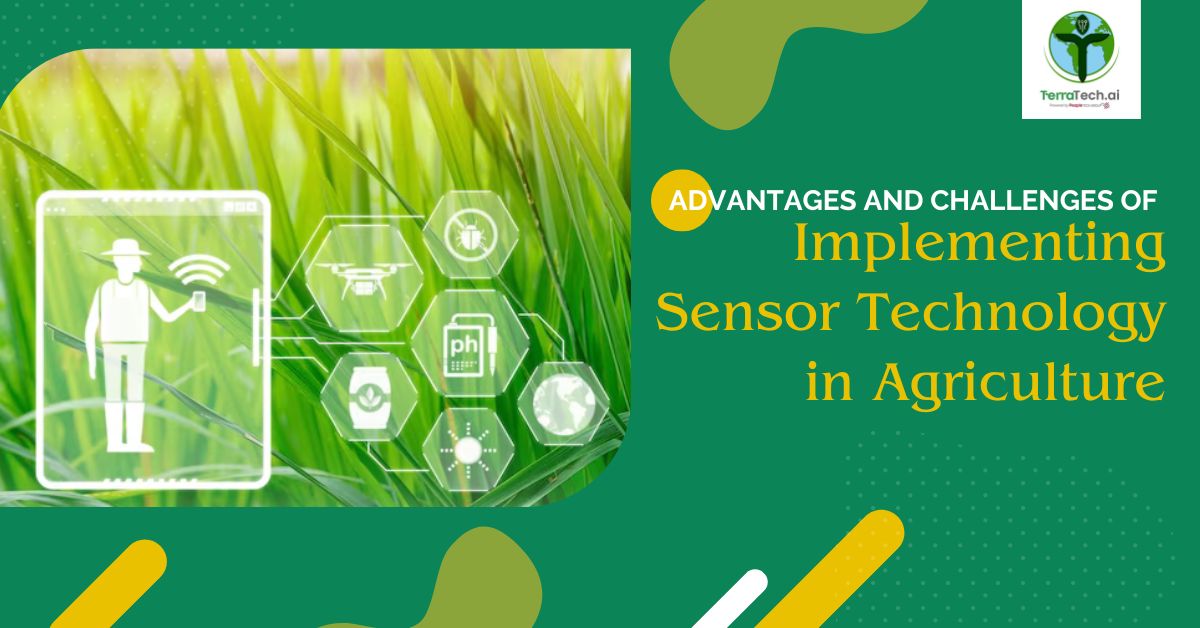Advantages and Challenges of Implementing Sensor Technology in Agriculture
Introduction
The agricultural industry undergoes several significant challenges today, including growing food demand, labor shortages, climate change etc. Precision agriculture is seen as a promising alternative to overcome the existing challenges of the agricultural industry. Precision farming is a farm management technique that leverages information technology to improve farming productivity and sustainability. As part of this smart farming practice, advanced sensors are used to measure different variables such as soil pH, nutrient levels, and moisture levels, etc. There are several advantages of implementing sensor technology in agriculture.
Let us explore the role of sensor technology in agriculture, its advantages, and limitations in this blog.
Types of sensors in farming
There are various types of sensors used in agriculture.
For example:
1. Electrochemical sensors that are used to measure soil nutrients and pH.
2. Mechanical sensors used for soil compaction.
3. Dielectric sensors that are used to calculate soil moisture levels.
4. Optical sensors can be used to detect weeds.
Sensors are pretty portable. They can be fixed in the field or mounted on agricultural machinery like tractors to measure the quantity of crops that are harvested or assess the volume of agrochemicals used.
Sensors attached to satellites and drones can measure crop health, detect factors that are potentially affecting crop health, perform landscape surveys, and assist in flood monitoring. Moreover, sensors assess livestock health, gathering data on animal behavior patterns or movements.
Advantages of using sensors in farming
The data gathered by sensors help farmers to make smart decisions, as farmers can use fewer resources to gain greater yields. Such an approach helps farmers to maximize their profits, helping to minimize food insecurity while improving agricultural sustainability.
Below are some key benefits:
1. Support precision farming
Sensor technology facilitates precision agriculture, helping farmers to monitor and manage their fields with maximum accuracy and minimal effort. Precision farming allows measuring soil moisture, nutrient levels, and temperature in real-time, which helps in targeted interventions for ensuring optimal crop growth.
2. Achieve resource efficiency
Sensors help farmers reduce water wastage by optimizing irrigation schedules. This way, farmers can efficiently manage water resources and support sustainability.
3. Enable early detection of pests and diseases
By detecting subtle changes in plant health, sensors alert farmers about the presence of pests or diseases at an early stage. Such an early detection mechanism helps farmers act on time and minimize crop damage by reducing excessive pesticides.
4. Foster data-driven/smart decision making
Data is the real currency today. The same applies to farming practices as well. Farmers can employ sensors to derive useful farming data. This data can be analyzed to identify the recent trends and patterns, helping farmers to make informed decisions and improve productivity and profitability.
5. Support economic growth
Sensors can monitor nutrient levels, environmental conditions, and growth patterns. Thereby, farmers can fine-tune their farming practices and improve crop yields. Ultimately, farmers can boost food production and attain the desired economic growth.
Challenges of implementing sensor technology in agriculture
Below are some of the challenges of implementing sensor technology in agriculture:
1. Higher initial investment
The cost incurred in setting up sensor technology is one of the most significant challenges faced by small-scale farmers. The overall package of sensors includes expenses on buying sensors, data analysis tools, and connectivity infrastructure. Such a high investment prevents many farmers from implementing this technology.
2. Data management and related concerns
Sensors generate massive datasets that need secured storage, analysis, and interpretation. Also, farmers are necessitated to have the skills and resources to manage this data to derive actionable insights.
In fact, many farmers in developing countries like India are not even aware of the benefits of this technology.
3. Connectivity and infrastructure
Internet connectivity is a prerequisite for enabling sensors’ real-time data transmission applications, especially from remote locations. The effectiveness of sensor networks gets compromised by poor connectivity.
4. Sensor accuracy and calibration
Environmental factors such as temperature fluctuations and humidity often impact sensor performance. Thus, it is essential to calibrate sensors to offer accurate readings.
5. Complexity of sensor technology integration
Implementing sensor technology by integrating it into existing agricultural practices demands specialized training, as farmers need to learn the technology to handle these devices.
6. Security and privacy concerns
Data gathered by sensors may include sensitive information. It is important to safeguard this data against cyber-attacks and potential misuse.
A way forward
Implementing sensors in farming offers a new dimension to agricultural practices. It promises resource efficiency, boosts productivity, and supports sustainable practices. Although sensors are transforming agriculture, their dependence on a wireless connection may affect their potential impact on agriculture. Despite the presence of underlying challenges, the advantages are far more significant. Thus, it is an indispensable tool of modern agriculture. With ever-evolving technology, addressing these challenges will become crucial to ensure sensor technology is accessible, safe, and operatable for farmers of all scales.
TerraTech is a new-age AgriTech platform that offers highly advanced yet innovative agricultural solutions by leveraging cutting-edge technologies.

